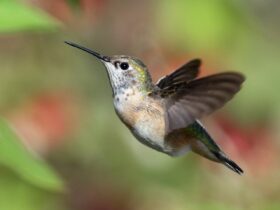As winter’s chill gives way to the gentle embrace of spring, a familiar and melodious bird arrives to grace North American landscapes—the American Robin (Turdus migratorius). With its vibrant orange-red breast and cheerful song, the robin has become a cherished harbinger of the changing seasons. In this article, we explore the captivating world of the American Robin, uncovering its appearance, behaviors, symbolism, and its role as a beloved and iconic bird of North America.
American Robin images
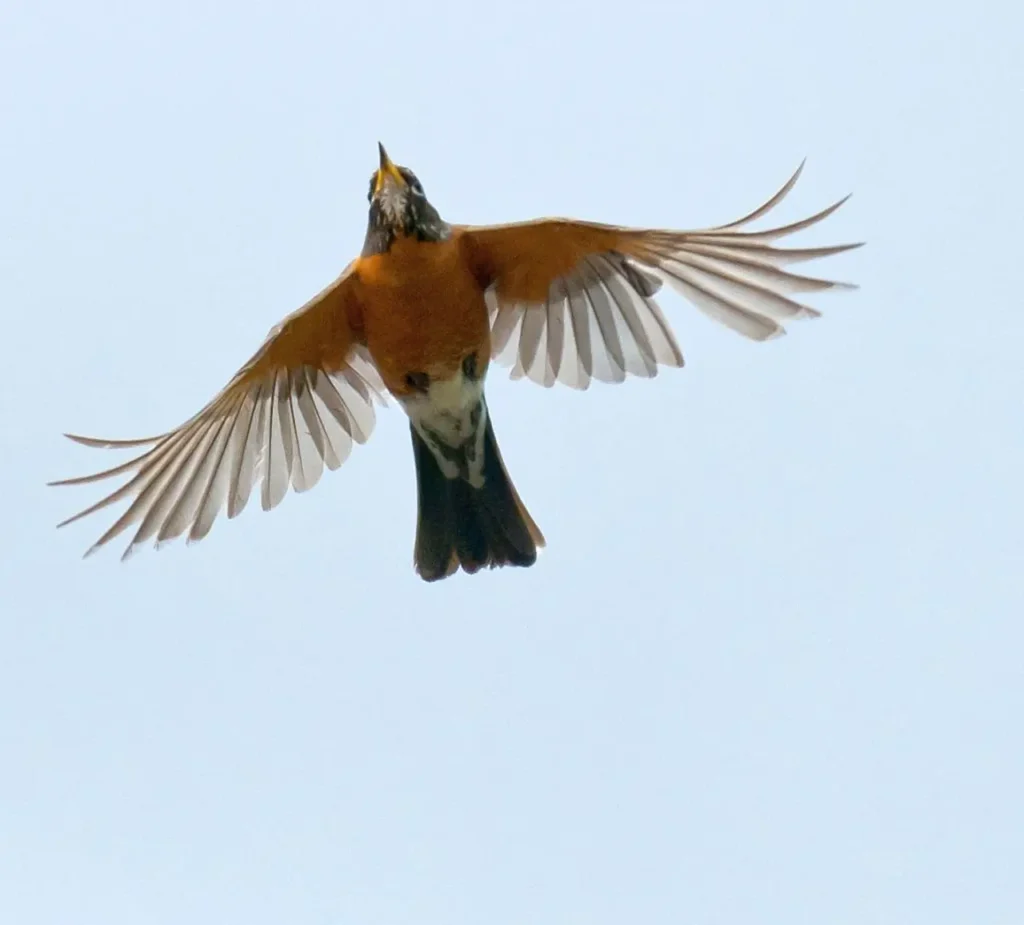
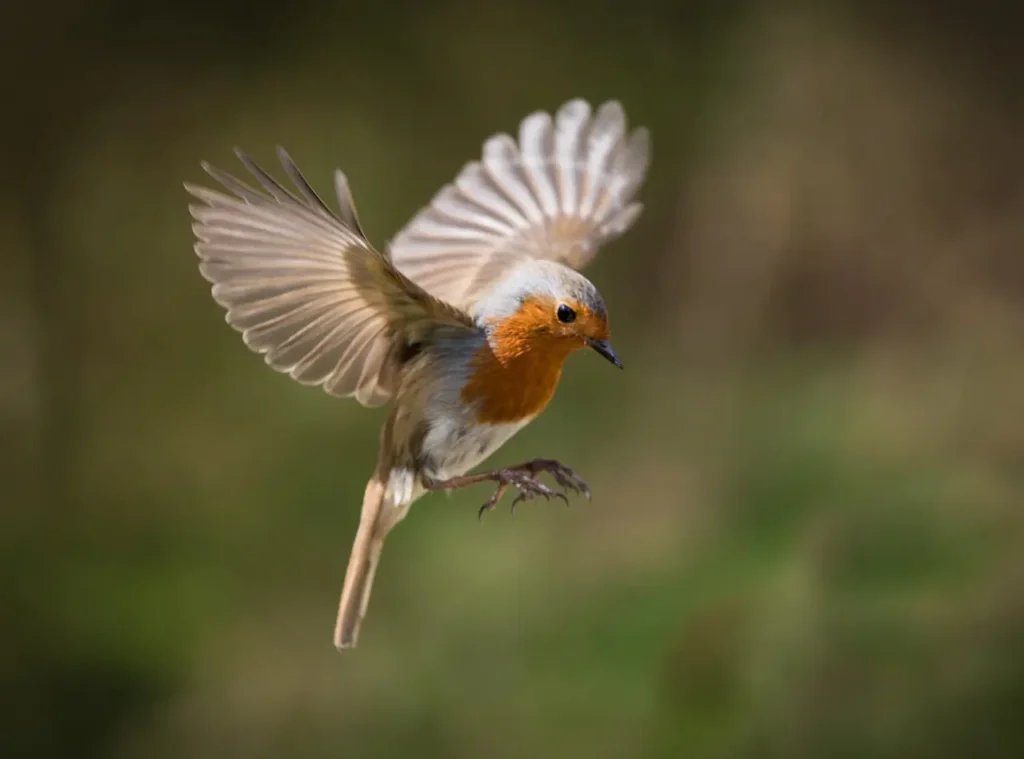
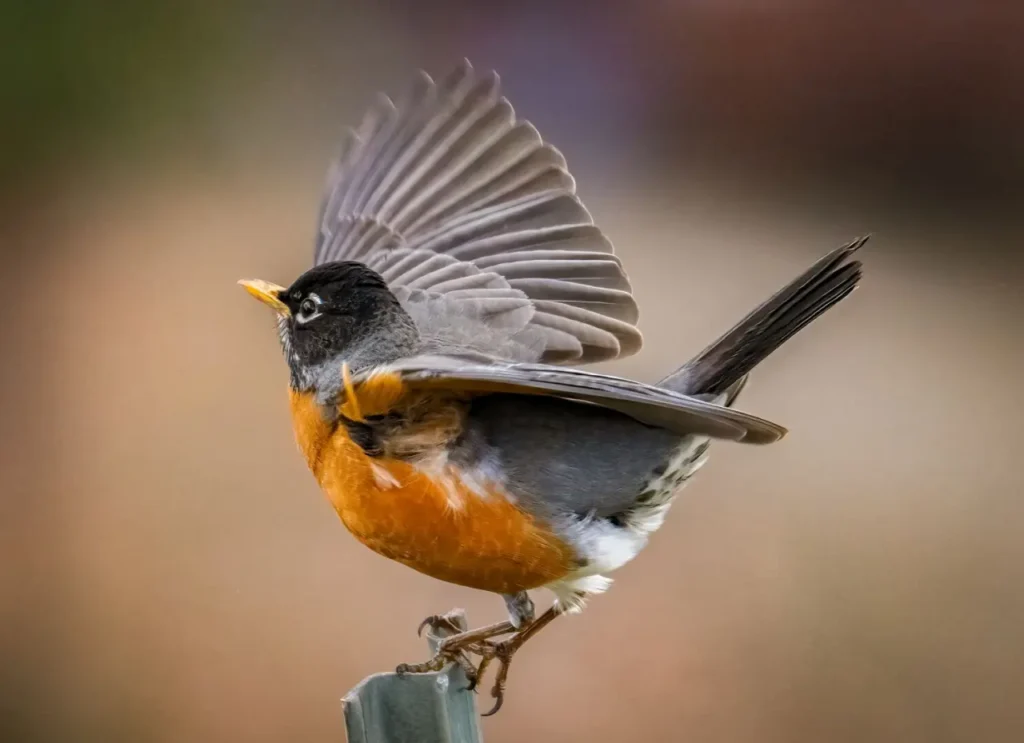
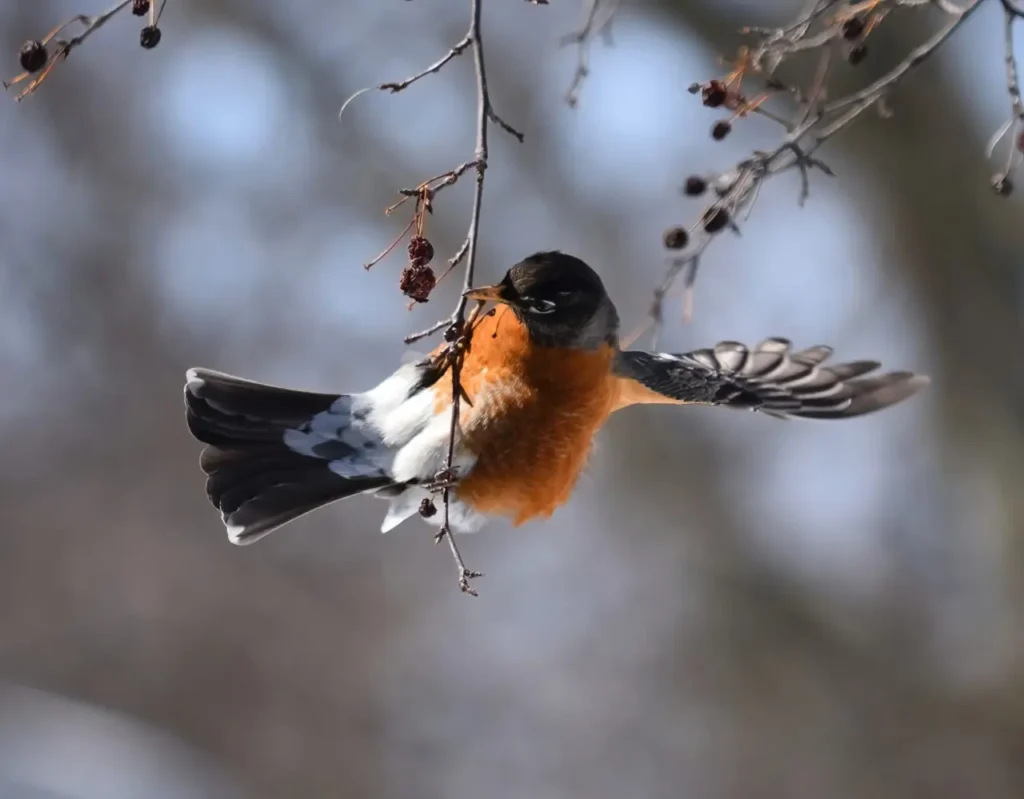
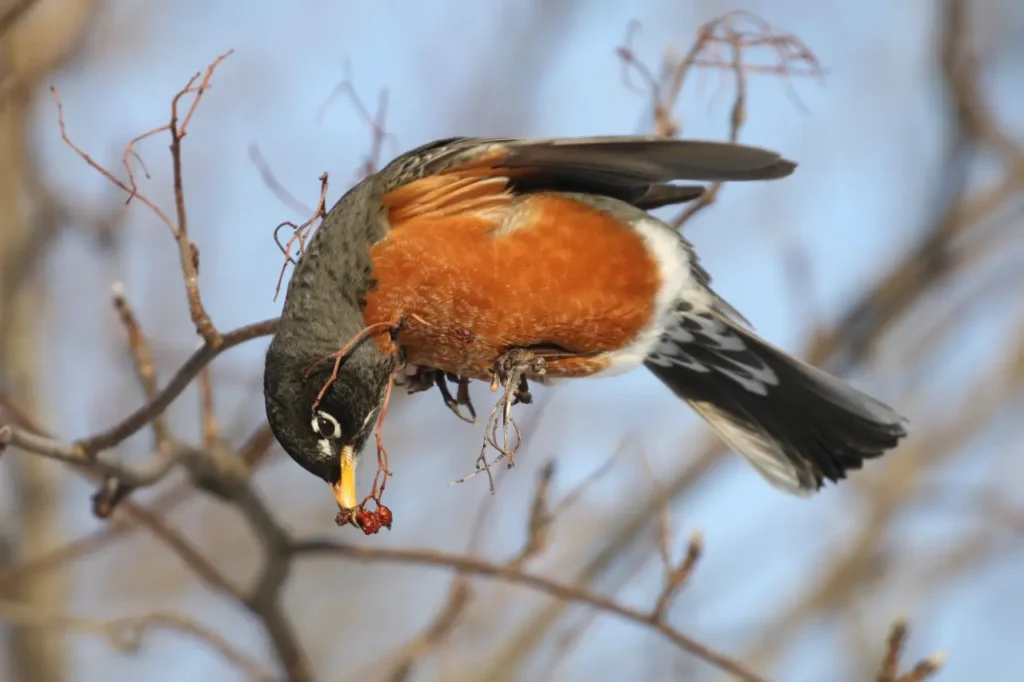
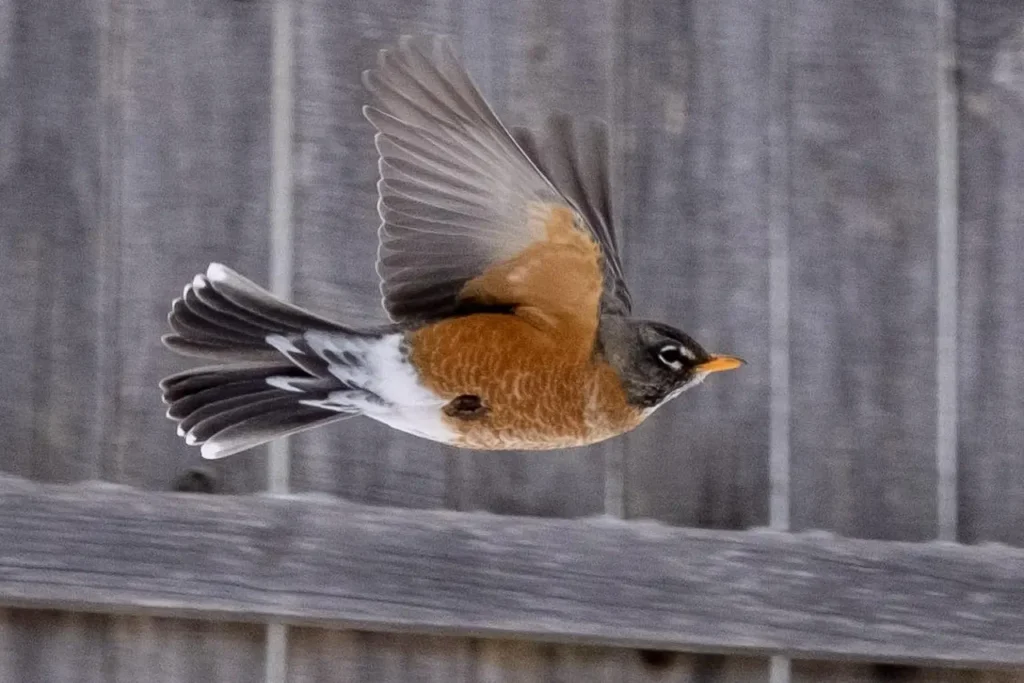
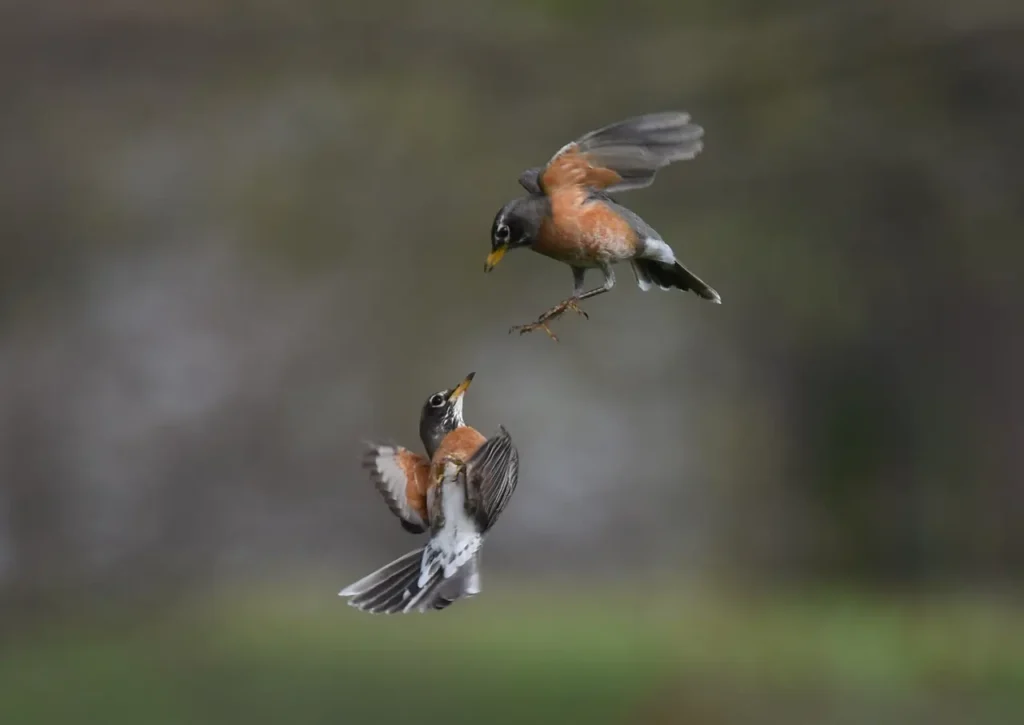
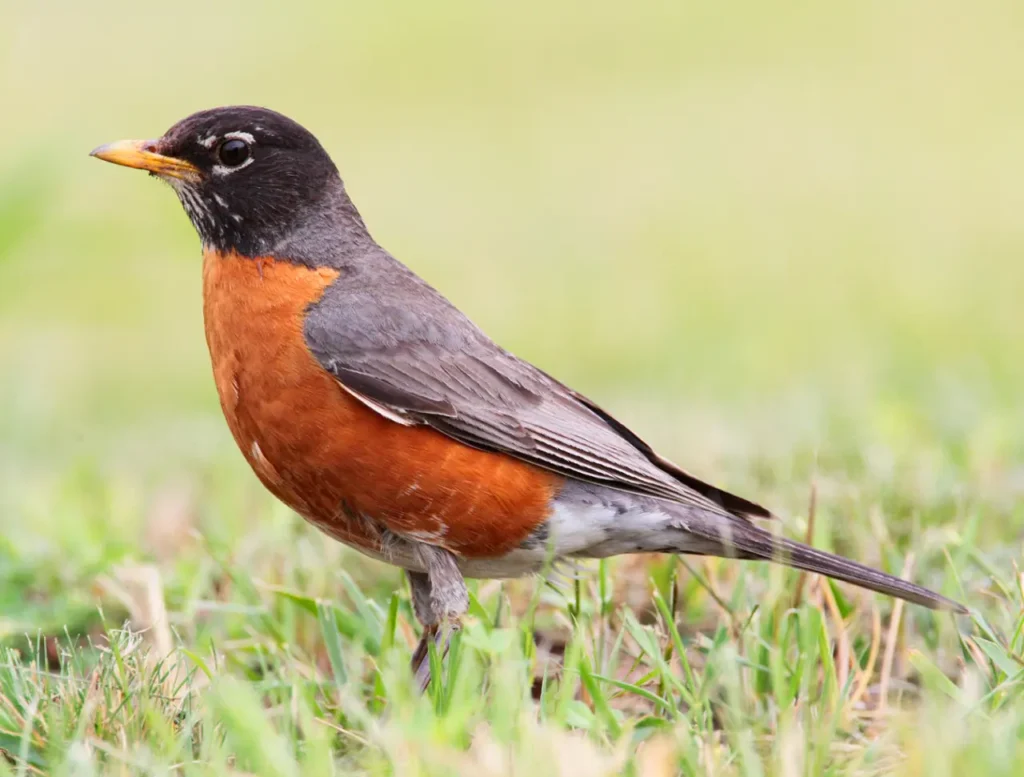
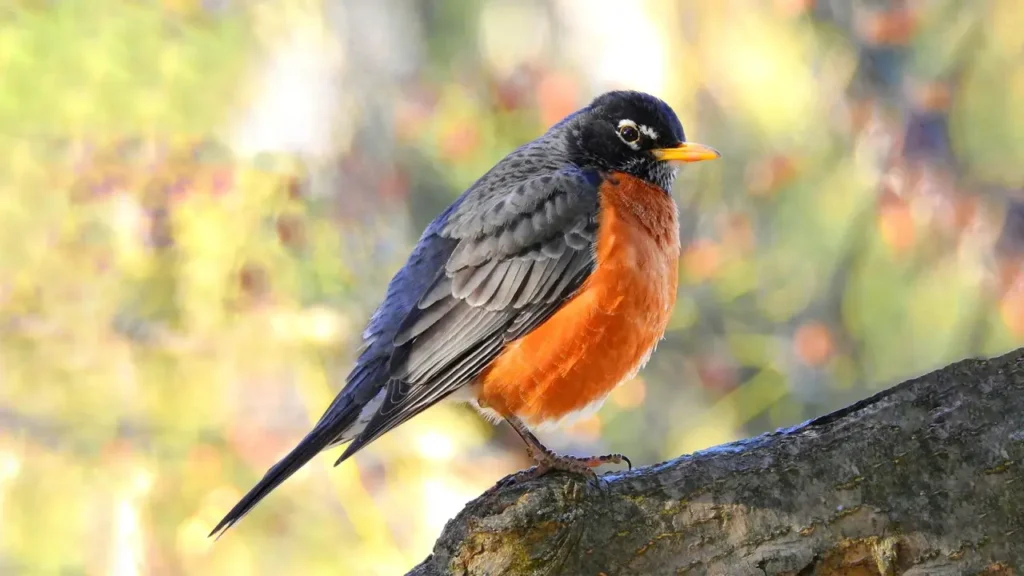
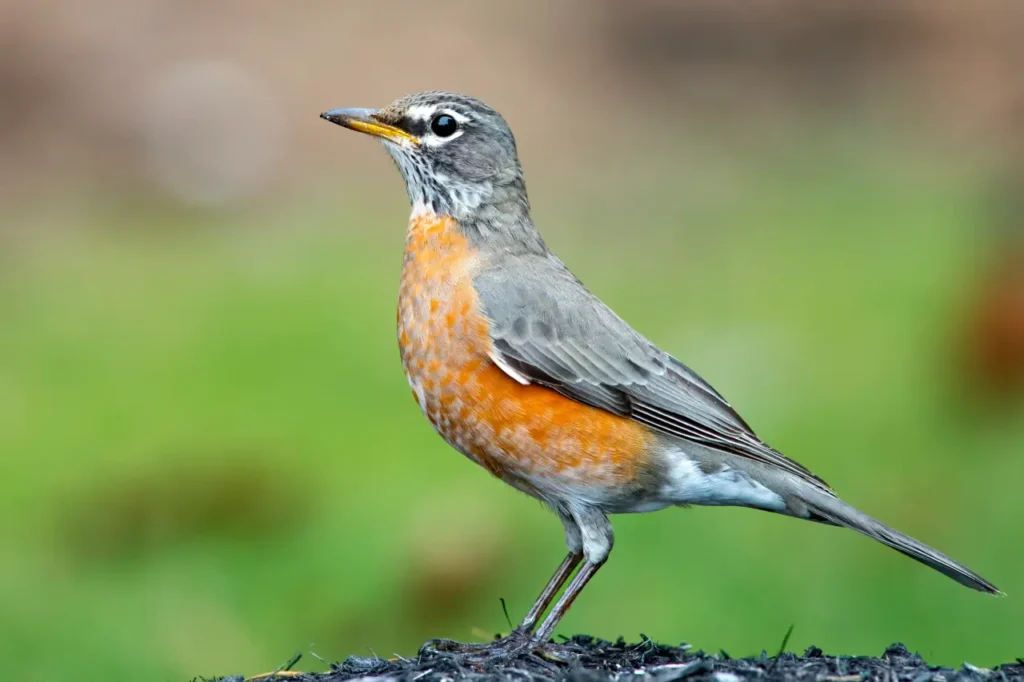
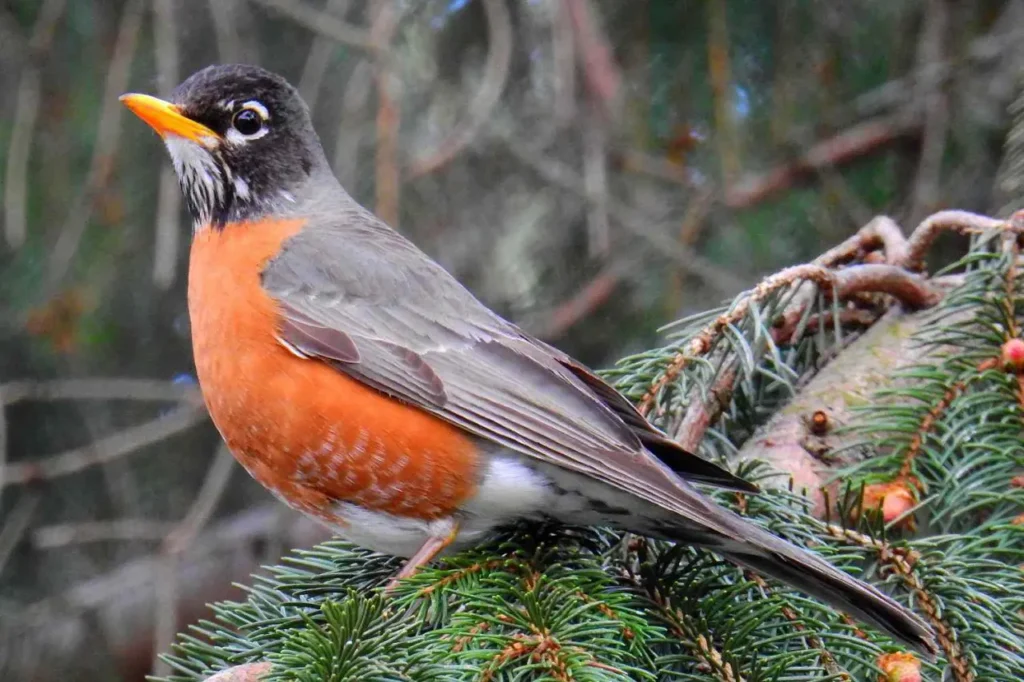
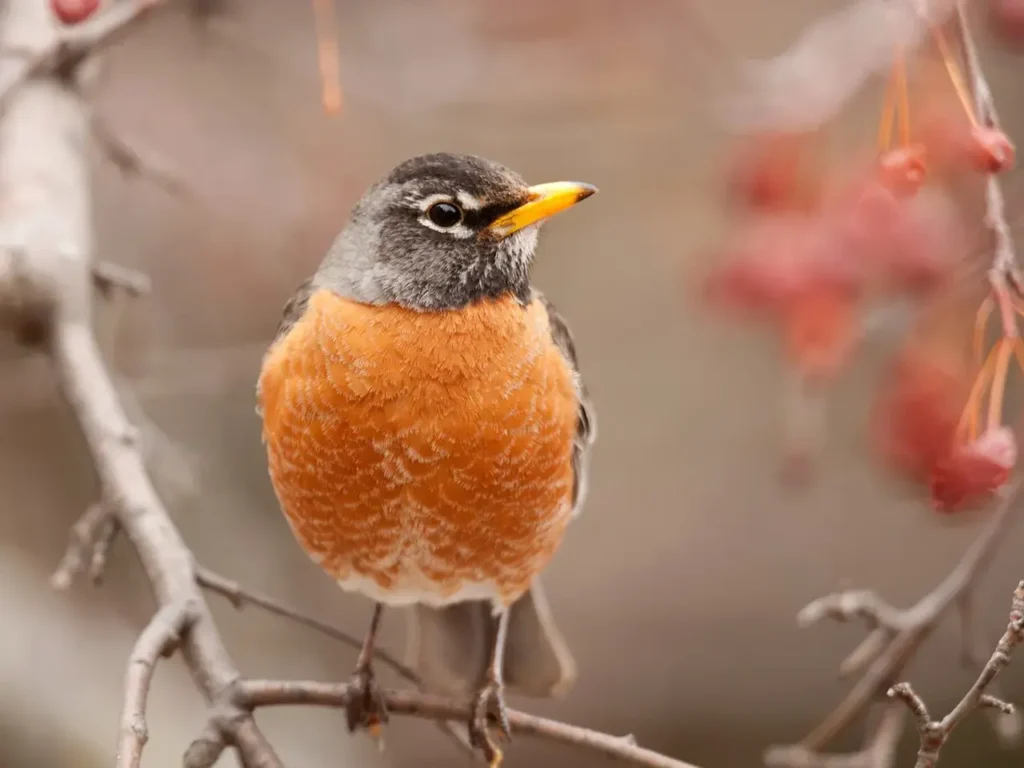
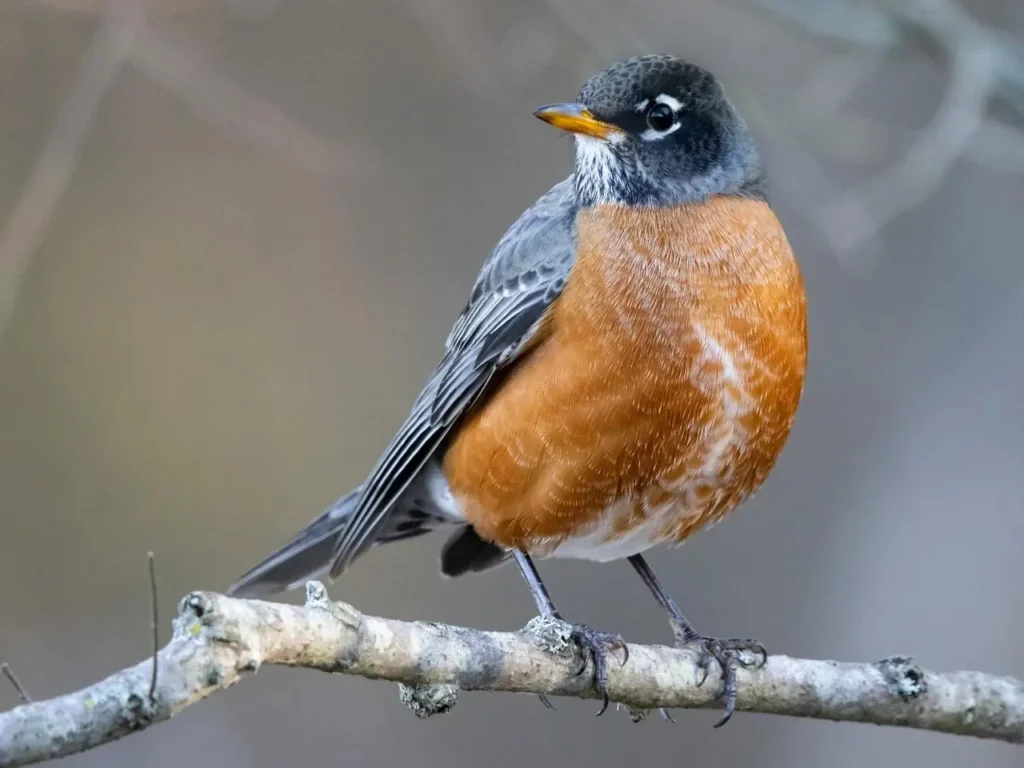
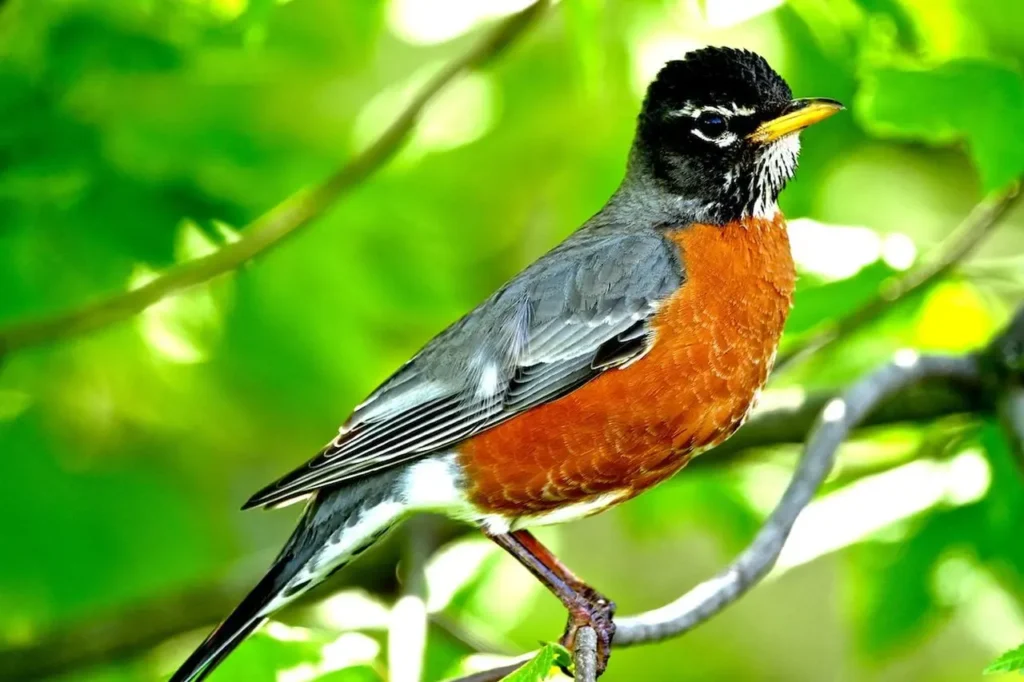
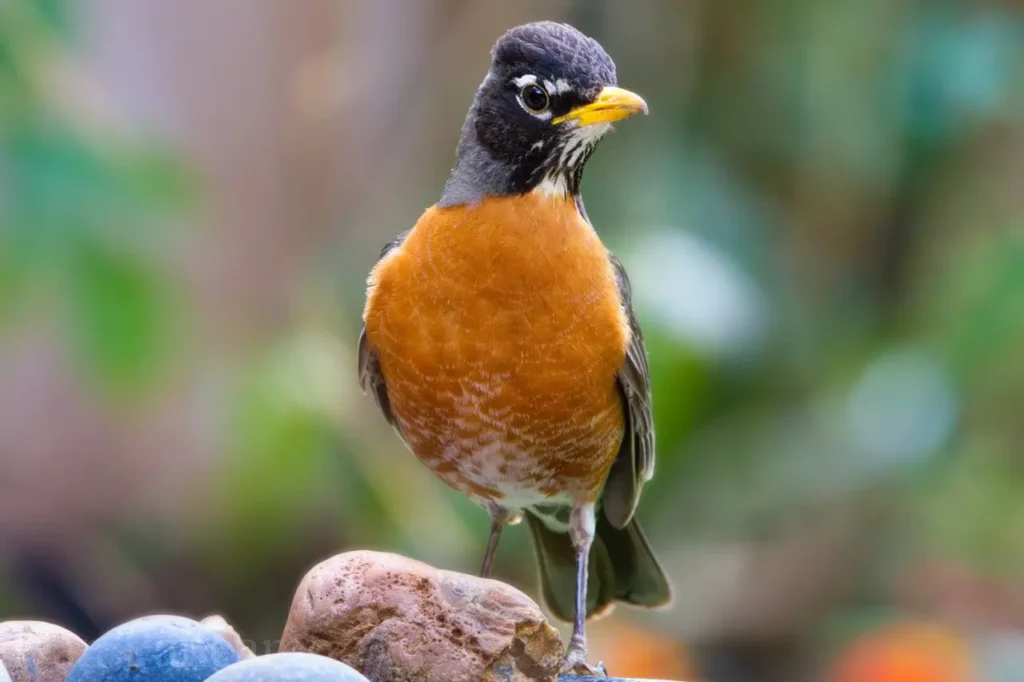
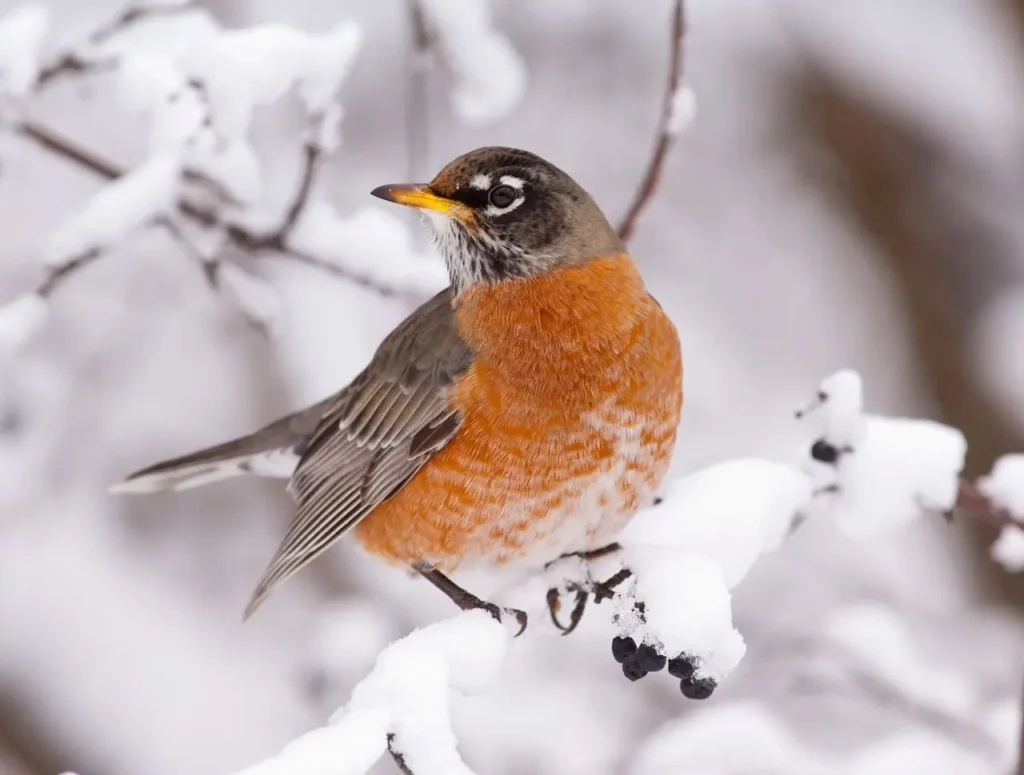
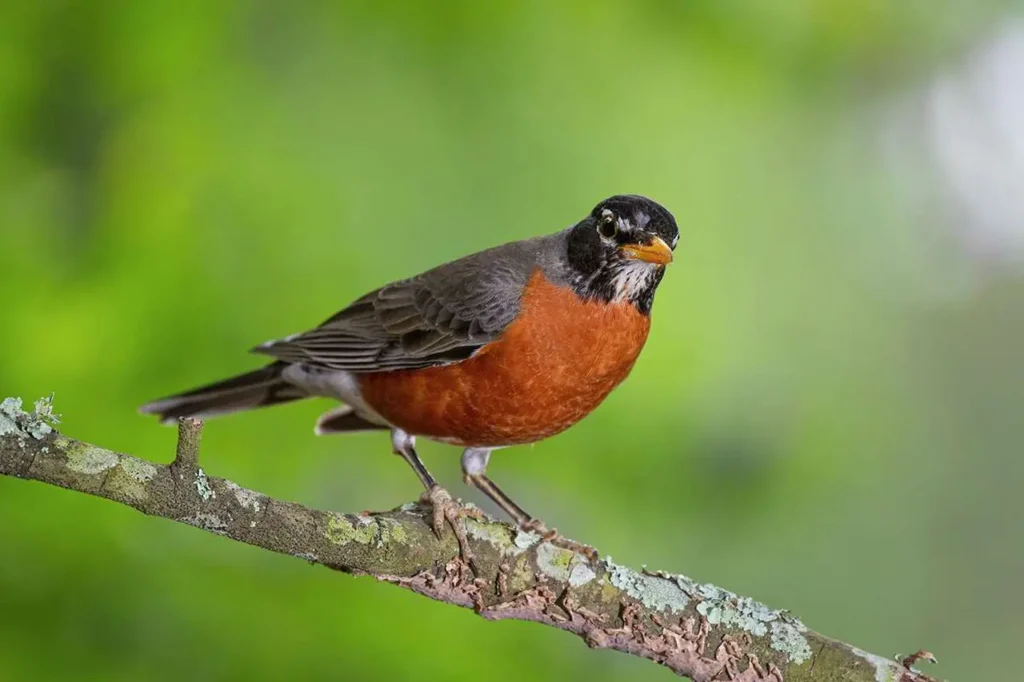
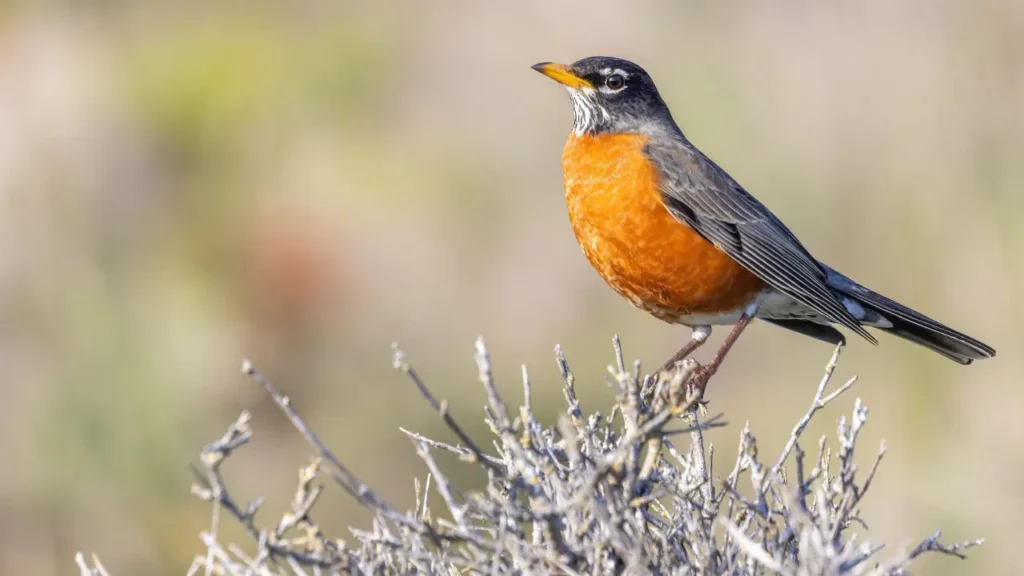
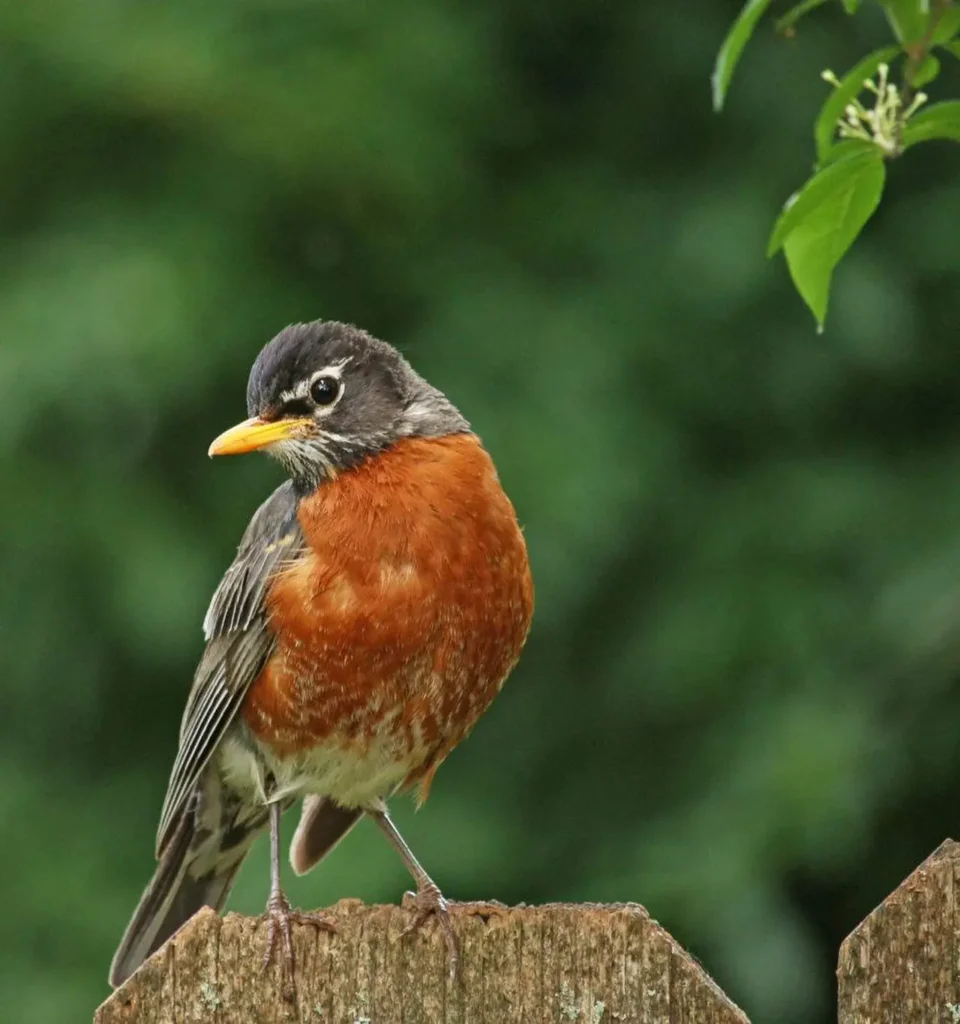
Appearance and Characteristics
The American Robin is instantly recognizable, with its bright orange-red breast, grayish-brown back, and distinctive white eye-ring. The robin’s upright posture and sleek body give it an alert and purposeful appearance, whether it’s hopping on lawns, foraging for food, or singing its melodious songs.
This bird’s medium size, averaging about 9-11 inches in length, makes it a common and approachable presence in backyards, gardens, and urban areas.
Behaviors and Adaptations
The American Robin is not only admired for its appearance but also for its behaviors and adaptability. It is an omnivorous bird, known for its varied diet that includes insects, earthworms, fruits, and berries. Its foraging techniques, such as the characteristic tilt of the head while listening for prey underground, showcase its resourceful nature.
Robins are known for their distinctive “cheer-up” song, which often greets the arrival of spring. Their musical calls echo through the early morning hours, contributing to the symphony of nature awakening from winter’s slumber.
Symbolism and Cultural Significance
The American Robin holds symbolic significance in North American culture. It is often regarded as a harbinger of spring, as its return coincides with the thawing of winter and the renewal of life. Its presence brings a sense of joy and hope, signaling the transition from cold and desolate days to the promise of warmer months ahead.
In some Indigenous cultures, the robin is associated with renewal, change, and the cycle of life. Its song and vibrant plumage are seen as representations of growth and transformation.
Conservation and Protection
While the American Robin is not currently considered threatened, habitat loss and human activity can impact its populations. The use of pesticides and habitat degradation can affect the availability of the insects and berries that form a significant part of its diet.
The American Robin, with its cheerful song and vibrant presence, is a cherished and iconic bird that signals the arrival of spring’s renewal. Its ability to adapt to diverse environments, forage for sustenance, and uplift spirits with its melodious calls make it a true ambassador of the changing seasons. By appreciating and protecting the habitats that support the American Robin, we ensure that its melodious song continues to resonate as a symbol of hope, joy, and the perpetual cycle of nature’s beauty.
